GET方法前置步骤做完
stu.models.py
再其中创建需要用到的字段及对应数据库的表

1 # -*- coding: utf-8 -*- 2 from __future__ import unicode_literals 3 4 from django.db import models 5 6 7 # Create your models here. 8 class Student(models.Model): 9 sname = models.CharField(max_length=30, unique=True) 10 spwd = models.CharField(max_length=30) 11 12 class Meta: 13 db_table = 't_student'
db.sqlite3--用pycharm自带的数据库
右键链接数据库
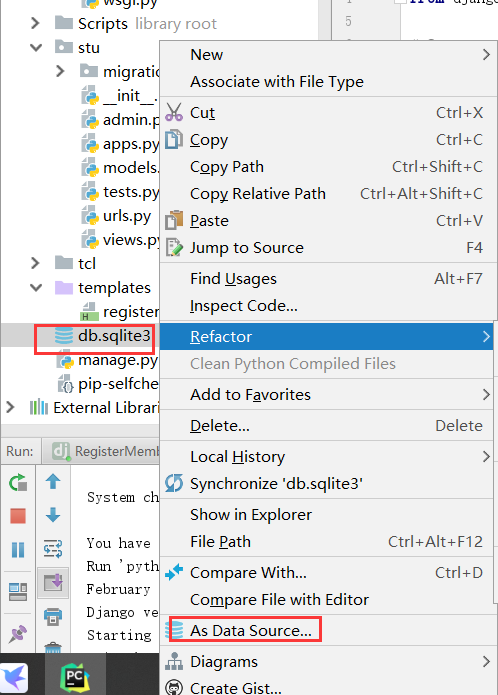
进入默认ok--connection测试链接(successfully)--apply-ok
点击右侧Database进入数据库
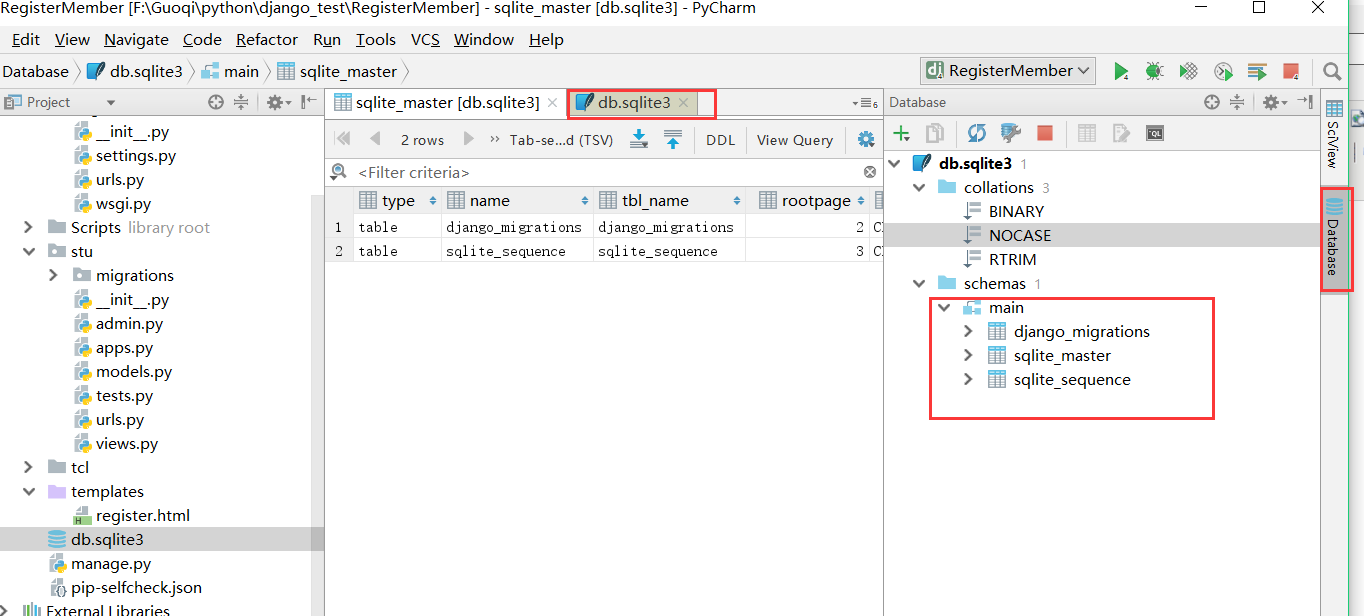
既然我们系统有很多默认的系统应用app,那么就一定有很多对应的数据库表,下面我们先把系统默认app映射到我们右侧的数据库中

进入Terminal,敲入命令>python manage.py后会弹出很多Terminal可以用到的命令,如果忘记了,可以输入此命令去查询
以下为python manage.py中所有可以用到的命令
1 Type 'manage.py help <subcommand>' for help on a specific subcommand. 2 3 Available subcommands: 4 5 [auth] 6 changepassword 7 createsuperuser 8 9 [contenttypes] 10 remove_stale_contenttypes 11 12 [django] 13 check 14 compilemessages 15 createcachetable 16 dbshell 17 diffsettings 18 dumpdata 19 flush 20 inspectdb 21 loaddata 22 makemessages 23 makemigrations #创建左侧文件夹migrations迁移到我们的应用app中 24 migrate #将现有的表映射到数据库 25 sendtestemail 26 shell 27 showmigrations 28 sqlflush 29 sqlmigrate 30 sqlsequencereset 31 squashmigrations 32 startapp #创建应用 33 startproject #创建项目 34 test 35 testserver 36 37 [sessions] 38 clearsessions 39 40 [staticfiles] 41 collectstatic 42 findstatic 43 runserver #启动服务器
在Terminal输入如下命令,将现有的应用对应的表映射到数据库
>python manage.py migrate
刷新数据库,多了系统表
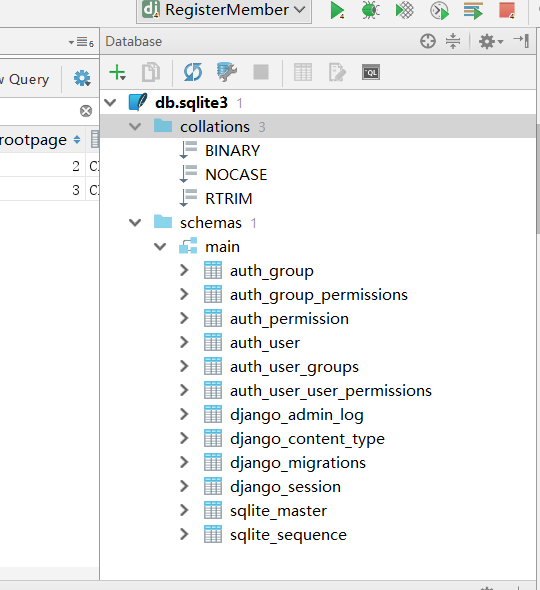
下一步,我们将我们自己的model映射数据库表

看上方会自动生成出自己model的迁移文件
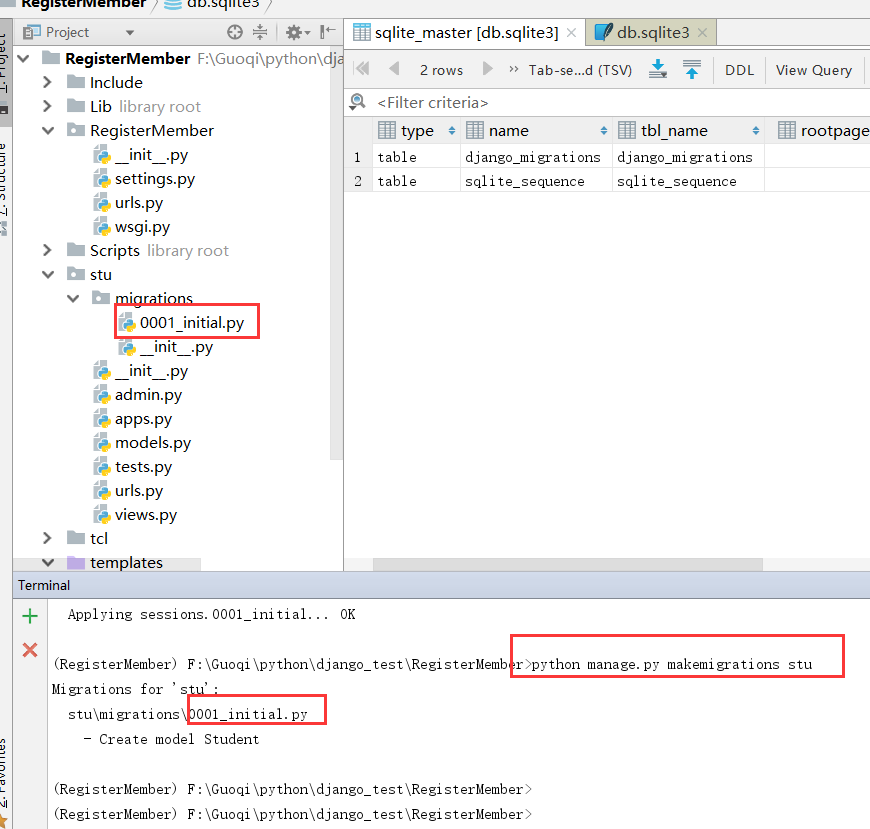
将我们自己项目,根据迁移文件映射到数据库表中
我们也可以通过一个语句去查看对应迁移文件生成的SQL语句是什么:
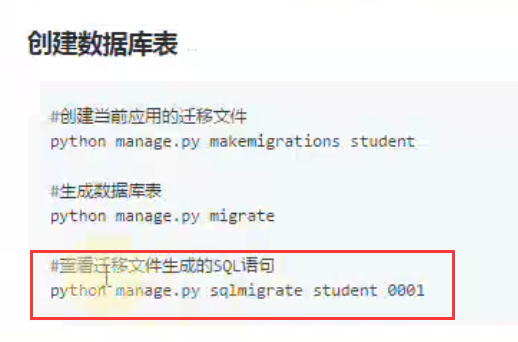

右侧数据库多出了t_stu表
可以通过语句>python manage.py sqlmigrate stu 0001去查看对应迁移文件中的SQL语句,其中stu为创建的应用i名,0001为迁移文件的名字
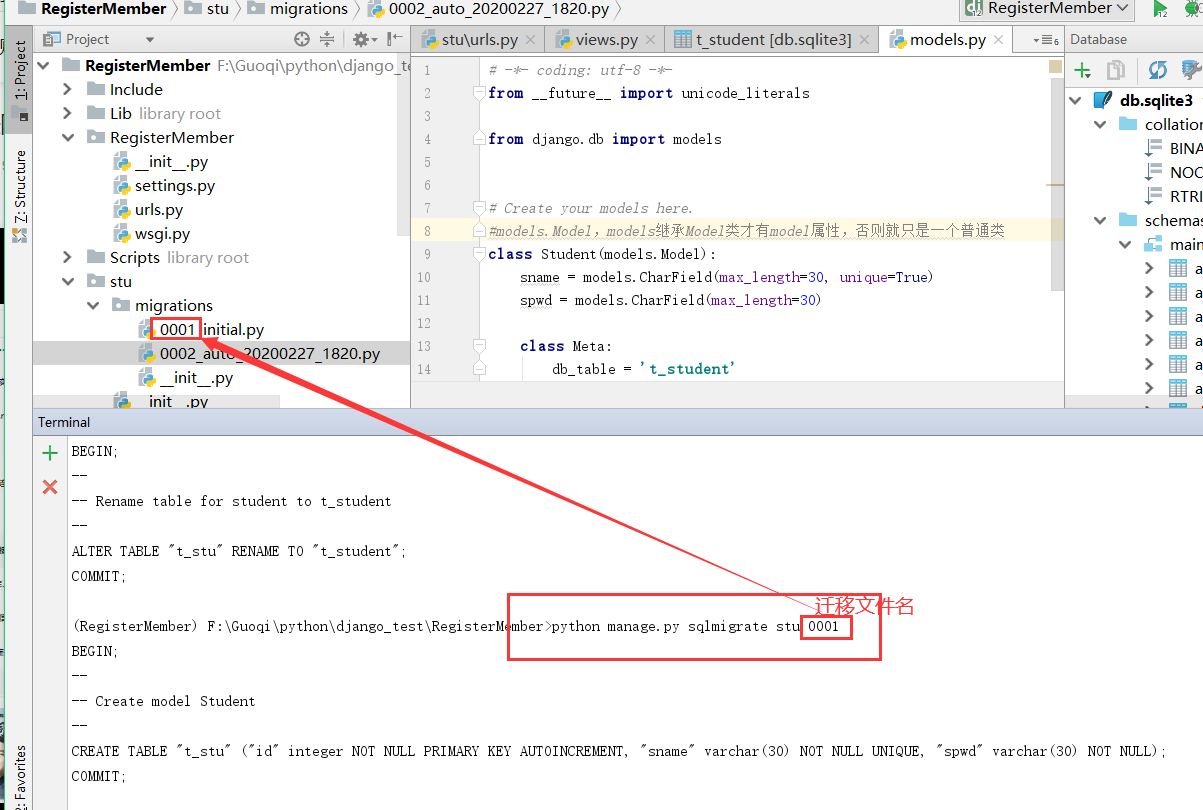

完善views.py内容(全程只是操作对象,并没有对数据库进行操作,这叫对象映射,在其他语言数据库中也有这种类似映射,当代码中执行save()方法的时候,底层会自动执行数据库语句,对是数据库的操作由底层自动完成我们只需要操作对象即可。)

1 # -*- coding: utf-8 -*- 2 from __future__ import unicode_literals 3 4 from django.http import HttpResponse 5 from django.shortcuts import render 6 from .models import * 7 8 9 # Create your views here. 10 def index_view(request): 11 # 获取当前请求方式(GET/POST) 12 m = request.method # request的请求方式,m值为GET 13 14 if m == 'GET': 15 return render(request, 'register.html') 16 else: 17 # 获取请求参数uname接收前台传过来的uname,虽然名字,一样但是是不同的变量;pwd同理 18 uname = request.POST.get('uname', '') 19 pwd = request.POST.get('pwd', '') 20 # 非空判断O 21 if uname and pwd: 22 # 插入数据库 23 # 创建模型对象,引入左POST侧models文件中的所有内容from .models import *,sname为数据库中的字段值,接收上方传过来的uname;spwd同理 24 stu = Student(sname=uname, spwd=pwd) 25 # 插入数据库 26 stu.save() 27 return HttpResponse('注册成功') 28 return HttpResponse('注册失败')
运行项目,浏览器中输入http://127.0.0.1:8000/student,输入用户名密码,点击注册,注册内容会自动出现在数据库中
Mysql事务的四大特性:

